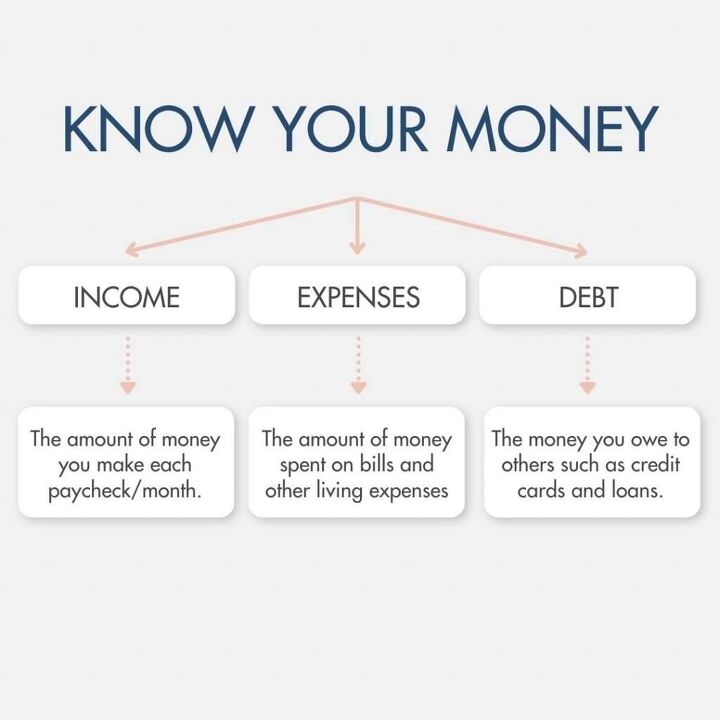8 Tips To Make Managing Your Money Easy

*This post is sponsored by Serve ®. All opinions are 100% my own.
It’s easy to feel overwhelmed when it comes to managing your money and improving your finances. There’s a lot that goes into budgeting, saving, and paying off debt. It might feel complicated at first but managing your money better doesn’t have to be complex!
Years ago, I avoided dealing with my money because even the thought of taking back control of my finances felt daunting. I figured that if I was managing my money, I would end up spending hours each day hunched over an Excel spreadsheet calculating how much money I spent at brunch the past weekend. The entire process felt complex and flat out boring. Plus, I would then be forced to face my unhealthy spending habits.
With the right guidance and convenient money tools like Serve® Pay As You Go Visa® Prepaid Card, managing your money can be, dare I say it, incredibly easy.
I’m sharing 8 things I did to make managing my money easier. Hopefully you can implement these tips and bring simplicity to your finances.
Tip 1: Get a clear picture of your finances.
The first step when it comes to managing your money better is to get a clear and complete picture of your money.
Before I did anything on my financial journey, I knew I had to know my income, expenses, and debt inside and out. While you might be nervous to take this first step, it really does make managing your money easier. When you have a clear picture of your finances, you’ll no longer fear the unknown with your money. You can’t move forward with your money if you don’t know where you’re starting.
The easiest way to get a clear picture of your finances is to know all your numbers. These numbers include:
- Income: how much money you make each paycheck or each month.
- Expenses: how much you spend each month on bills as well as other living expenses.
- Debt: how much money you owe others.
Once you know where you’re starting with your finances, you can develop a plan to help you move forward with your money.
Tip 2: Set specific savings goals.
When I started managing my money better, I knew I had to make saving money a priority. In the past I didn’t save money because I didn’t know what I was saving for. Once I set specific savings goals, it immediately became easier to send money to my savings goals each month. As my savings grew, I knew I was one step closer to reaching my money goals.
I’m guessing you’ll want to take a family vacation in the next year or so. Or maybe it’s time to take a trip to one of the greatest waterfalls in North America with friends (this is what I did!). To help make managing your money easier, it’s important to set specific savings goals. These goals can include anything that you want to spend money on in the future (like new furniture), or even what you might spend money on in the future (like new tires for your car).
To help make saving money easier, find a bank or prepaid account that allows you to separate your savings into goal accounts. Serve’s Pay As You Go Visa Prepaid Card does this! You can easily create goal accounts for your money, so you have a clear picture of what you’re saving for. Not only does this keep you in the know with your money, but it also keeps saving money at the forefront of your mind!
Tip 3: Set spending goals.
I’m the first person to admit that I have had a major spending problem. I loved spending money and would use it to cheer myself up, celebrate my success, and even cure boredom. As soon as money entered my hands, I immediately wanted to spend it! As you can imagine, this led to more financial stress in my life. Once I created spending goals for my money, I was able to send more money to savings and our money goals.
Spending goals act as a boundary for your money. They help you stay on budget, curb overspending, and live on less than you make. It’s easy to overspend on restaurants, groceries, and online shopping when you don’t have a boundary, or goal to focus on.
To set spending goals, think through how much you want to spend on variable expenses that change from month to month. These expenses might include:
- Groceries
- Restaurants
- Entertainment
- Clothing
- Personal Care
Look through your past spending to get an accurate picture of how much money you usually spend on variable expenses each month. Then, set a goal amount for each spending category. You’ll be surprised how much more control you’ll have over your money when you set these boundaries.
Tip 4: Understand, and avoid, bank fees.
Understanding (and avoiding!) bank fees makes managing your money easier as well. Some banks charge monthly fees just for users to have an account open. Other banks charge fees if your balance drops below a certain threshold. These fees can catch you off guard and cost you serious money!
As you’re working on improving your finances, find an account that is upfront and has no hidden fees. Serve’s Pay As You Go Visa Prepaid Card features a pay-as-you go fee model, rather than a flat monthly service fee, so you’ll only pay for the services you need. This way, you’re in control of the fees you will, or won’t, pay!
Tip 5: Create money routines.
Last year I realized I wasn’t reading as often as I would have liked. In the past I was an avid reader, but over time I stopped prioritizing the hobby that I once loved. To help me get back into reading, I decided to set up a routine that would allow me to be successful. Instead of reading physical books, I downloaded audiobooks and listened to them each day while I went on a walk or cooked dinner. My new reading routine allowed me to read over 24 books in a year and I have a goal to read over 30 books this year!
Creating routines in your life turns tasks into habits. So why not create a money routine as well? My money routine includes tracking my spending, checking my bank account daily, and looking over my spending and savings goals each week.
Technology has made creating money routines simpler than ever! Having access to a bank account with an easy to use app is essential. It’s best to find one that allows you to quickly see your money in action! Serve’s Pay As You Go Visa Prepaid Card offers an app that allows you to deposit checks on the go as well as send and receive money from other Serve cardholders.
Managing your money will become much easier when you have routines set up that allow you to know more about your money.
Tip 6: Communicate about money.
There’s a reason many couples end up arguing over money! Learning how to manage money with another person can be extremely frustrating…especially if you don’t always see eye to eye on how to spend combined money. While you won’t always agree on how every penny should be spent, it is possible to get on the same page with your partner when it comes to the household finances. The only way to do that is to start communicating about money often.
To foster communication in our marriage, my husband and I started meeting weekly for about thirty minutes to discuss our budget, money, and any upcoming family activities on the calendar. This allowed us to get on the same page with our money and family schedule! It greatly improved our communication when it comes to our budget and money goals.
On top of weekly communication, it’s best when both partners can see spending in action. This allows both people to be held accountable for how they are spending money. Serve’s Pay As You Go Visa Prepaid Card allows users to setup up to 4 subaccounts. This way multiple family members can easily make purchases, send money to others with the same account type, and withdraw money from the ATM.
Tip 7: Cut back on recurring charges.
When I was first learning how to manage my money, I started by cutting back on the recurring charges or subscriptions I was paying. Not only did I want to spend less, but I also wanted to simplify my expenses and finances overall.
To get started, I printed the last 3 months’ bank statements and highlighted every recurring charge. I then asked myself the following questions:
- Can I live without this recurring expense?
- Do I find value in what this expense offers me?
- If I cancel this recurring expense, what is my plan for the money I will save?
While I could not cancel every recurring charge (internet and my cell phone had to stay!), there were several subscriptions that I could live without. Instead of paying $40+ each month for a gym, I used the free gym that my apartment offered.
By cutting back on recurring charges, I found more money in my budget each month and simplified my money which made managing my money much easier.
Will you try this? Look through your own expenses and see what you are willing to cancel. Ask yourself the same 3 questions listed above. And be sure to remember that even if you decide to cancel an expense for the time being, it doesn’t mean you’ll never be able to sign up for it again in the future.
Tip 8: Know and understand your credit score.
The first time my husband and I wanted to buy a home, we were told we would struggle to qualify for a loan because we had too much debt and our credit scores were too low. Before that moment, I had never given my credit score a second thought. In fact, I didn’t even know what a credit score was and how to improve mine!
Your credit score matters.
Your credit score is a 3-digit number that is calculated based off information from your credit report. This score is used to help lenders know how likely you are to repay a loan. The interest rate you receive on a home loan, car loan, or other loans are impacted by your credit score. The best way to increase your credit score over time is to understand how your credit score is calculated.
Your credit score is calculated in percentages:
- 35% Payment History: Whether or not you pay your bills on time has the greatest impact on your credit score.
- 30% Amounts Owed: Your credit utilization is the percent of credit you use. If you have a $1,000 credit limit and you currently have a $700 balance, your credit utilization is 70% on that card. Lower credit utilizations tend to impact your credit score in a positive way.
- 15% Length of Credit History: How long you’ve had established credit as well as how long you’ve had your oldest and newest accounts impact your length of credit history.
- 10% Credit Mix: Part of your score is calculated by the type of credit you have, such as home mortgages, credit cards, and store cards.
- 10% New Credit: If you open too many accounts at once, your credit score will be impacted.
Serve’s Pay As You Go Visa Prepaid Card allows you to open an account with NO credit check, ever.
Serve’s Pay As You Go Visa Prepaid Card Makes Money Easy
Are you ready for an account that offers you the flexibility you need to spend money on your own terms? If so then you’ll want to check out Serve’s Pay As You Go Visa Prepaid Card. Check out some of the many benefits of Serve’s Pay As You Go Visa Prepaid Card:
- Free Early Direct Deposit: You work hard for your money, so why not get it sooner? Get your checks up to 2 days early*.
- Online Bill Pay: Easily pay all your bills online (no need for that checkbook!).
- Free Subaccounts: Give easy, free access to your account to family members!
- Mobile App: Manage your money better with Serve’s easy to use mobile app.
- Pay-as-you-go fee model, instead of a flat monthly service fee.No Credit Check: Serve won’t check your credit…ever!
- Get Your Tax Refund Sooner: Expecting a tax refund? Awesome! Get it up to 2 days sooner than everyone else!**
Interested in learning more about Serve’s Pay As You Go Visa Prepaid Card? I don’t blame you!
*Faster access compared to standard payday electronic deposit and subject to your employer submitting paycheck information to the bank before payday. Your employer may not submit paycheck information early.
** Faster access compared to standard tax refund electronic deposit and subject to IRS submitting refund information to the bank before release date. IRS may not submit refund information early.
The Bottom Line
Take it from someone who knows…your money doesn’t have to be complicated. When you’re willing to try out these 8 tips, you’ll be surprised to see how much easier it is to take back control over your finances.
One BIG way to help streamline your money is to use Serve’s Pay As You Go Visa prepaid card. This $0 monthly fee card gives you the freedom to spend money how you want, on your own terms. Click here to learn more about how Serve’s Pay As You Go Visa Prepaid Card can help make managing your money easier than ever and to view full terms and conditions, including fees.



























Comments
Join the conversation
THESE SUGGESTIONS ARE GREAT. MY MONEY WAS CONTROLLING ME AT ONE TIME, NOW I CONTROL IT. THIS POSITION IS MUCH BETTER. TU
????
YES